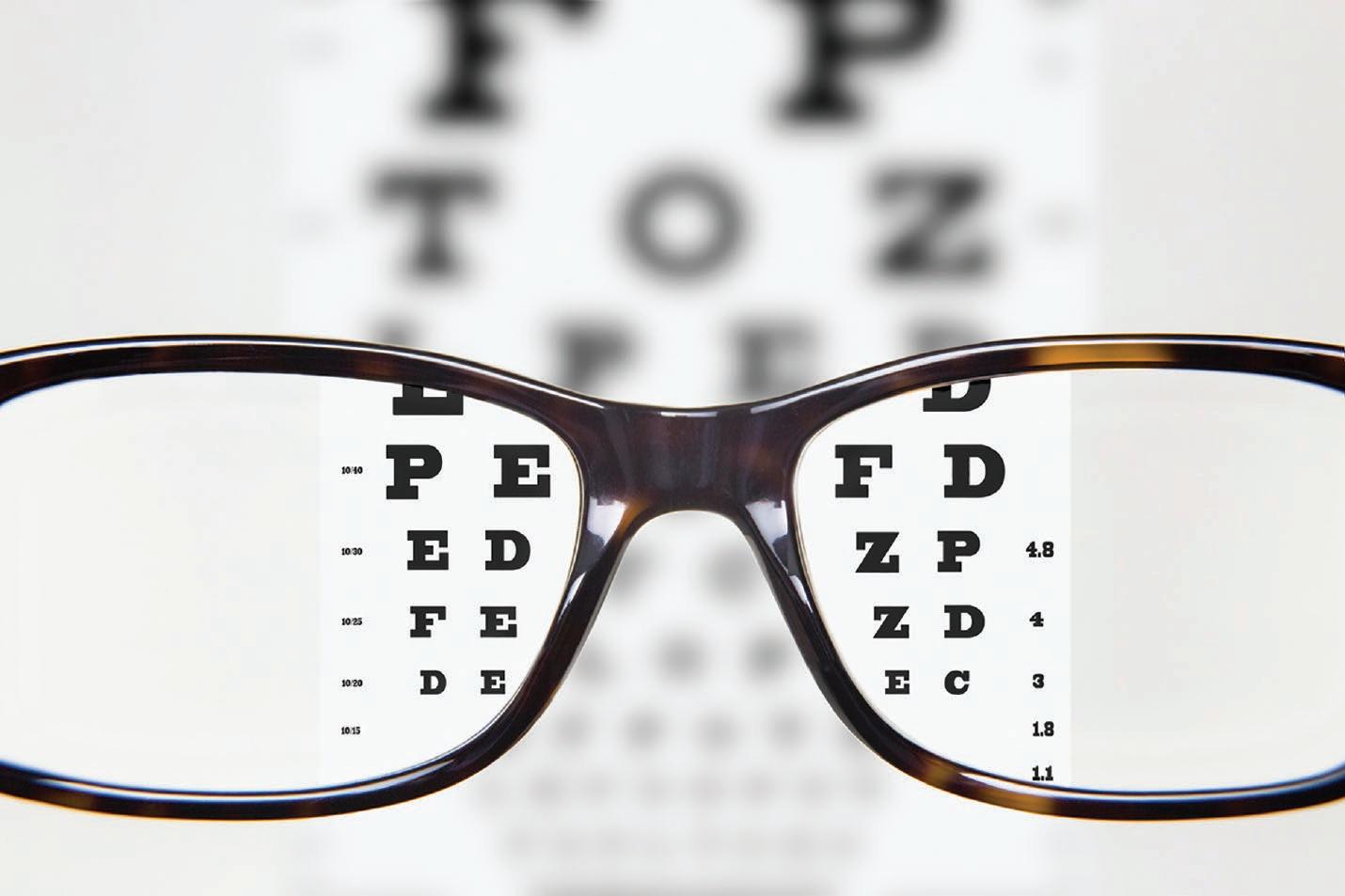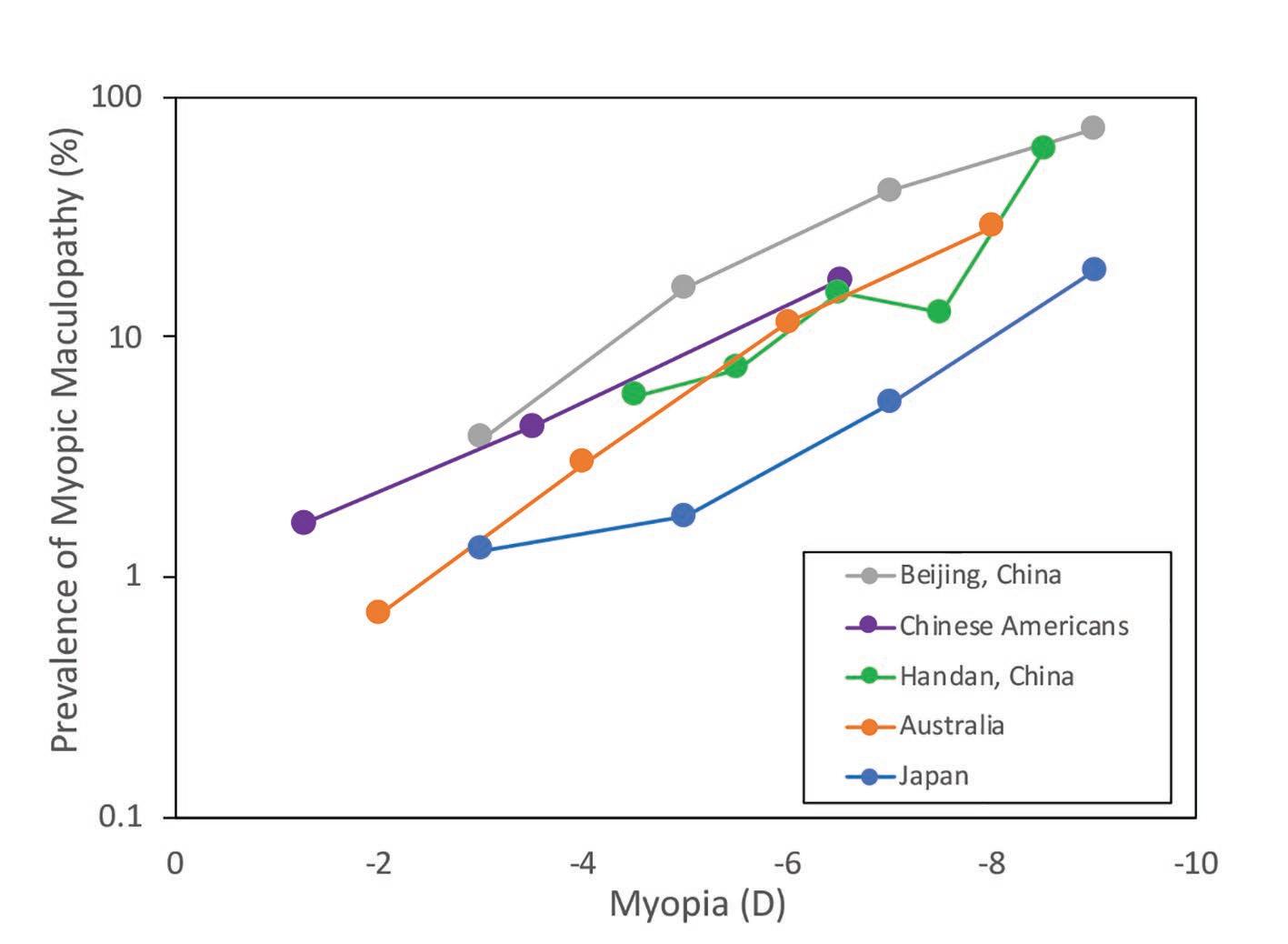
3 minute read
Foreword
Myopia (short-sightedness) is defined as ‘a refractive error in which rays of light entering the eye are brought to a focus in front of the retina when ocular accommodation is relaxed’. This usually results from the eyeball being too long from front to back but can be caused by an overly curved cornea and/or a lens with increased optical power.’1 Myopia is the most common cause of distance vision impairment in the world and has gained attention over the last few decades due to its alarming rate of increased prevalence, reaching epidemic levels in many countries, notably, but not limited to Far East Asia.2 Indeed, The Northern Ireland Childhood Errors of Refraction (NICER) study conducted on school children identified a doubling of myopia in U.K. children over the past 50 years.3
Myopia in children progresses as children grow and a low myopic prescription in a young child is often just the start. As a child grows throughout the school years, myopic children may experience an associated increase in their myopia leading to greater dependence on their spectacles or contact lenses to compensate for their increasingly blurred distance vision. A myopic eye grows abnormally long, and this makes the eye vulnerable to various myopiaassociated pathologies later in life including myopic maculopathy, retinal detachment, glaucoma and cataract later.4,5,6,7 An eye with an axial length greater than 26mm and more than -6.00 dioptres refractive error is significantly associated with a lifetime risk of untreatable visual impairment.8
Correcting myopia with conventional spectacles or contact lenses helps children see, but doesn’t slow down the increased growth of the myopic eye. Myopia management is an emerging field in optometry and ophthalmology of clinically relevant importance which can ultimately result in the child being a lower myope than they were destined to become as they enter adulthood. This may result in a lower final prescription and perhaps less dependence on their spectacles, but more importantly, a shorter axial length with potentially less vulnerability to sight-threatening myopia-associated pathologies.8
This report outlines the growing prevalence of myopia across the global and the genetic and environmental aetiologies that might offer an explanation. The consequences of myopia are outlined with the corresponding burden on health care systems. The strength of the evidence-base in supporting the management of myopia through a variety of interventions is described, along with a risk-benefit model of optical myopia management with contact lenses. Early intervention to slow myopia progression using a range of clinically useful options, from optical methods to pharmaceuticals, has the potential for significant socio-economic importance and the report concludes with a far-sighted view on the future landscape of myopia management.
Martin Richards Editor-in-Chief
References:
1 Flitcroft DI, He M, Jonas JB, et al. IMI – Defining and classifying myopia: a proposed set of standards for clinical and epidemiologic studies. Invest Ophthalmol Vis Sci. 2019;60:M20–M30. https://doi.org/ 10.1167/iovs.18-25957 1 Holden BA, Fricke TR, Wilson DA et al. Global Prevalence of Myopia and High Myopia and Temporal Trends from 2000 through 2050. Ophthalmology. 2016; 123:1036-42. 1 McCullough SJ, O’Donoghue L, Saunders KJ (2016) Six Year Refractive Change among White Children and Young
Adults: Evidence for Significant Increase in Myopia among White UK Children. PLoS ONE 11(1): e0146332. https:// doi.org/10.1371/journal.pone.0146332 1 Jones D, Luensmann D. The prevalence and impact of high myopia. Eye Contact Lens. 2012;38:188–196. 1 Iwase A, Araie M, Tomidokoro A, et al. Prevalence and causes of low vision and blindness in a Japanese adult population: the Tajimi Study. Ophthalmology. 2006;113:1354–1362. 1 Xu L, Wang Y, Li Y, et al. Causes of blindness and visual impairment in urban and rural areas in Beijing: the Beijing
Eye Study. Ophthalmology. 2006;113:1134. 1 Oku Y, Oku H, Park M, et al. Long axial length as risk factor for normal tension glaucoma. Graefes Arch Clin Exp
Ophthalmol. 2009;247:781–787. 1 Tideman J.W et al. Association of axial length with risk of uncorrectable visual impairment for Europeans with myopia. JAMA Ophthalmol. doi:10.1001/jamaophthalmol.2016.4009






